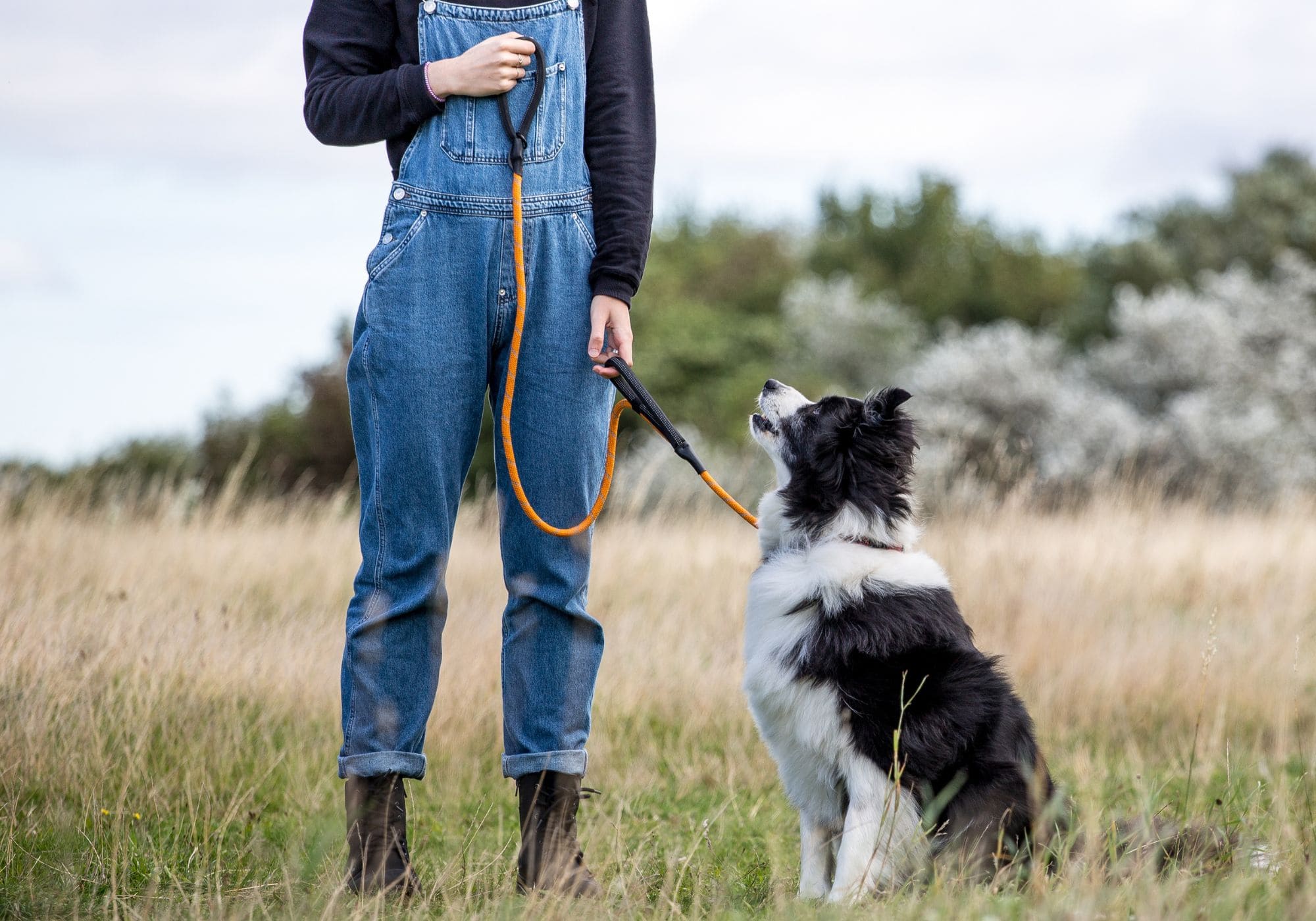When Do Dogs Stop Growing?
One of the most rewarding things about adopting a pup is watching it grow. Like any other furry friend, puppies eventually reach maturity and stop growing.
So, when do dogs stop growing? Depending on the breed, canines can keep growing for up to 24 months. Larger dogs tend to achieve maturity later than smaller breeds.
Small dog breeds reach maturity between 10 to 12 months of age. Medium-sized canines stop growing by the 15th month, while large breeds reach maturity before the 18th month. Giant-breed dogs stop growing after 24 months.
Why the wide range? Larger breeds take longer to achieve maturity because their bigger bones need more time to develop.
This article will discuss when dogs stop growing, including the factors influencing your pup's growth.

How Do Pups Grow, anyway?
What defines your pup's growth; is it the development of muscle or bone tissue? Muscles and bones develop in different ways. Muscles and soft tissues grow and repair throughout your dog's life. Your dog can bulk up despite reaching maturity if put through a proper training regimen.
But bone development is a bit different. Unlike muscles and soft tissues, bones don't grow in adulthood. Once your pup achieves maturity, bone development stops.
For example, long bones in puppies grow from two distinct points known as growth plates. Growth plates create new bone tissue at the end of each long bone. As your pup ages, the new bone tissue hardens and calcifies, eventually extending the length of the bone. Once your dog reaches maturity, the growth plates thin and close.
For pups, growth plates are fragile and susceptible to injury. For this reason, you shouldn't subject young pups to strenuous exercise. Jumping from great heights, for example, could damage developing growth plates.
Factors That Determine When Dogs Stop Growing
Growth is not uniform in all dogs. Factors affecting your dog's growth rate include breed size, genetics, and nutrition.
Breed Size
Smaller dog breeds like Chihuahuas and Yorkshire Terriers reach maturity faster than larger dogs. Larger breeds need more time to develop their bones and bodies. While a small breed may only need 12 months to reach maturity, a giant breed can take up to 24 months to grow to full size.
Genetics
Regardless of breed, every pup has a unique genetic code that influences its growth rate and body build. A dog can pass down some traits to its offspring. A puppy from a large parent is likely to develop into a large dog in adulthood. The opposite is also true.
Nutrition
Like the human body, canines need nutrients (proteins and minerals) to grow. A pup fed on essential nutrients is more likely to grow faster than one fed on a poor diet. To optimise your pup's growth, provide high-quality meals specifically formulated for growing puppies.
At What Age Do Dogs Stop Growing?
Dogs of different sizes grow at different rates. Below are the average ages for maturation of various breed sizes:
Small-Breed Dogs
Small breed dogs are those that weigh under 10 kilograms as mature adults. Examples of small-breed dogs include (but are not limited to) Toy Poodles, Bichon Frise, Maltese, and Dachshund. Small breed dogs stop growing between the ages of 10 and 12 months. These pups experience rapid growth between the 4th and 6th month.
Medium-Breed Dogs
These dogs typically weigh between 10-12 kilograms in adulthood. Examples of medium-breed dogs include Basset Hounds, Beagles, and Miniature Schnauzers. These dogs stop growing by the time they hit 15 months of age. Medium-breed dogs experience accelerated growth between the 8th and 12th month.
Large-Breed Dogs
These dogs weigh between 12-25 kilograms as fully-grown adults. Examples of large-breed dogs include Pit Bulls, German Shepherds, Labrador and Golden Retrievers, Boxers, and Collies.
Large-breed dogs stop growing by the time they hit the age of 18 months. They experience rapid growth between the 2nd and 4th months.
Giant-Breed Dogs
Giant-breed dogs weigh over 40 kilograms. Picture breeds like the Great Dane, Saint Bernard, Mastiff, and Great Pyrenees. These breeds of dogs take the longest to reach maturity. Giant-breed dogs reach maturity between the ages of 18-24 months.

How to Feed a Growing Pup
Puppies and adult dogs have different nutritional requirements. Check out the dietary guidelines for every stage of a pup's life, as set by the Association of American Feed Control Officials.
Soon after weaning, pups can transition to puppy food. Propper nutrition is essential to the growth and development of a pup into a healthy adult.
Pet food companies formulate pup food to meet the needs of the growing canines. For example, the food has more calories than adult dog food to meet your pup's energy requirements. It also includes essential vitamins and minerals to support bone and organ development.
The Nutritional Requirements for a Puppy
A growing pup's diet must include the following nutrient:
Protein
As puppies grow, their internal organs, muscles, and soft tissue must develop. In aid of this development, the canine body requires essential amino acids (the building blocks of protein).
Fat
Pups are high-energy animals. Pups need a steady supply of glucose to replace the energy they spend playing and causing mischief. A great source of glucose is animal fat.
Fat also plays a vital role in the absorption of fat-soluble vitamins. Pup food will always contain portions of fat in comparison to adult food.
Calcium
Similar to human children, pups need calcium to develop their bones and teeth. The calcium requirements for large and giant-breed dogs are higher than those of toy-breed dogs. Choose the best meal for your pup's breed size for the best results.
Carbohydrates
Like fat, carbohydrates are also a reliable source of energy for pups. The canine body breaks down carbs before fat, giving your pup fast energy. Carbs are also an excellent source of fibre, which combats constipation.
DHA
Docosahexaenoic acid (DHA) is an omega-3 fatty acid. It supports brain and vision development. Canine milk is rich in DHA and is a pup's first source of this vital nutrient. After weaning, pups depend on their diet for this essential nutrient. Natural sources of DHA include fish and fish oil.

Final Thoughts: When Do Dogs Stop Growing?
Dogs stop growing when they reach maturity. Depending on size, different dog breeds reach maturity at different ages.
Small-breed dogs reach maturity between the 10th and the 12th month.
Medium-breed dogs stop growing between the 12th and the 15th months. Large-breed dogs reach maturity by the age of 18 months. Giant bread dogs can grow up to the 24th month.
Larger breeds reach maturity later than smaller breeds because their bones and organs need more time to develop.
Pups need a steady supply of nutrients through healthy diets to help their growth. Nutrients like protein help pups grow muscles, while calcium helps develop strong teeth and bones. Carbohydrates and fat supply the canine body with energy, while DHA helps in vision and brain development.
As cute as puppies may appear, dogs eventually grow into maturity. While we can't stop their growth, we can help the little rascals develop into mature adults.
How fast does your pooch grow? Let us know about your pup's development in the content section below.






Leave a comment